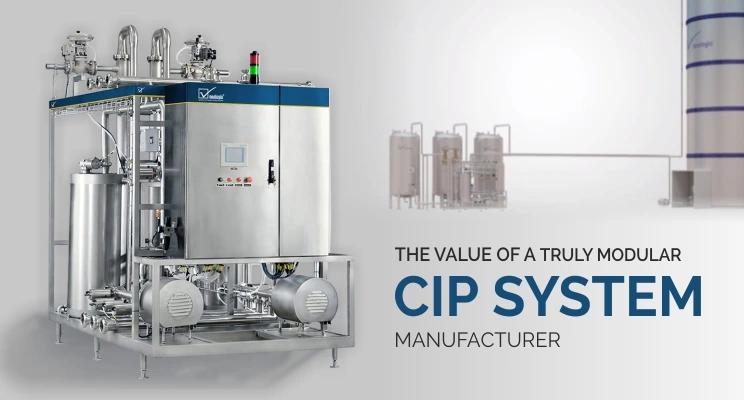
The Value of a Truly Modular CIP System Manufacturer
Multiple industries have been using Cleaning in Place Systems for more than 50 years now. Operators use Modular CIP systems in Cosmetics, Pharmaceutical (oral, topical, bulk, injectable), Dairy & Beverage (milk, milk products, soda, and juice), and Food (non-dairy creams, whipped toppings, and baking) industries to clean various types of plants.
What Is Cleaning in Place (CIP)?
Various types of modular CIP systems come in numerous designs – single-tank, portable or stationary, two-tank or multi-tank, re-use, single-use, and once-through tanks. The industry buys the system as per their plant standards. Buying a CIP machine is wise and advisable because it minimizes the usage of chemical and cycle time, promotes worker safety, and reduces utility and water costs.
Evolution of CIP Systems
In the early 90s, CIP was done manually which involved a balance tank, and centrifugal pump, and a connection to the system being cleaned. Later on, in the 1950s, CIP systems were introduced by CIP system manufacturers. The machine mostly includes multiple CIP solution tanks, fully automated systems with programmable logic controllers, heat exchangers, valves, sensors, spray nozzle systems, and data acquisition.
Manually operated CIP systems are still used by various industries today. If you want to save time, money, and resources, then you must install a CIP system. This system is engineered only for your requirements and plant application.
Why is it Essential to Use CIP?
Although the plant may look polished and shiny from the outside, there is no guarantee of cleanliness on the inside of the plant. Bacteria like yeast spores or E Coli may be invisible to the naked eye and dirt can cause contamination in food and a foul smell in the container. Therefore, it becomes critical for one to use CIP systems in the plant for maintaining hygiene. The operator must clean the vessel with a suitable chemical to remove germs.
Process of CIP
The CIP system developed by various CIP system manufacturers is used in the cleaning of pipes and vessels of Two-Tank & Multi-Tank, Single Tank, and Dual Operating by mixing water, chemicals, and heat in the water. This process is said to be one of the most effective and efficient ways of cleaning machines. It is a one-shot activity where the dirt and grime are drained out in one or more attempts. One can also recycle the cleaning liquid for further use.
Professionals mainly use two methods of CIP. The first method is high-pressure cleaning, which is executed to remove dirt by force, while the second method of low-pressure cleaning relies on chemicals to dislodge and remove the stubborn dirt particles.
You might also like: How to Clean Dairy Equipment?
Which Cleaning Agents Should Be Used While Cleaning the Equipment?
The CIP systems commonly use Caustic Soda, Peracetic Acid (PAA), Phosphoric and Nitric acids as well as Sodium Hypochlorite (Hypo).
- Caustic Soda: This chemical is used at 0.5% – 2% volume. It softens the fats and removes the dirt, but it does not remove tough scales. Thus, it is used in removing soils from the tanks.
- Phosphoric and Nitric Acids: This acid is used to remove scales and debris in dairy factories. One must handle these acids with care because they can affect the valve and pump seals of the tank.
- Sodium Hypochlorite: Hypo is used for disinfecting. If not used correctly, then it can corrode stainless steel. It may also become dangerous if combined with any form of acids.
Today, CIP System is available for the Dairy and Food & Beverage industries. Your operation will function smoothly if you control and program the cleaning cycle timely. Understanding the system and its efficiency is significant in maintaining the cleanliness of the tank and thereby manufacturing products that meet industry standards in high food quality. Therefore, one must use the right size and design of CIP to rinse and remove the dirt particles.